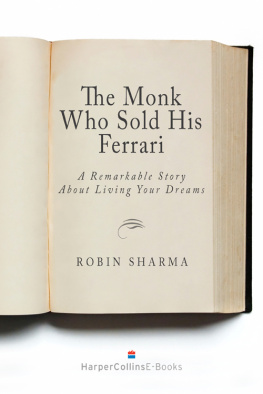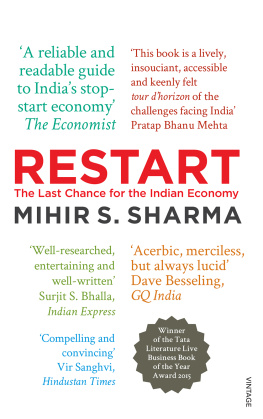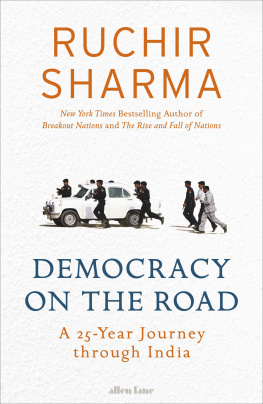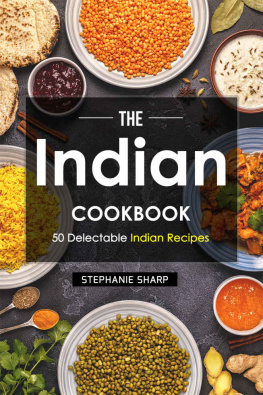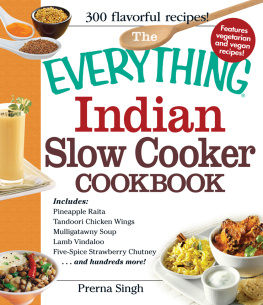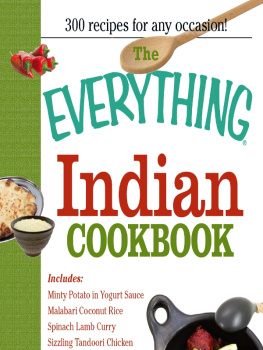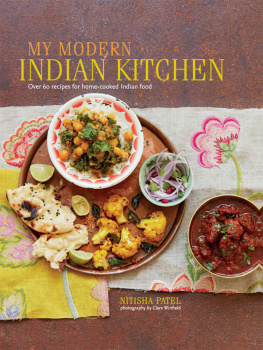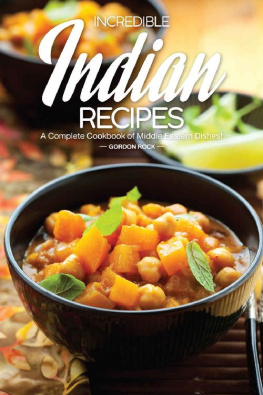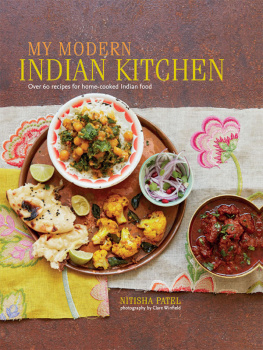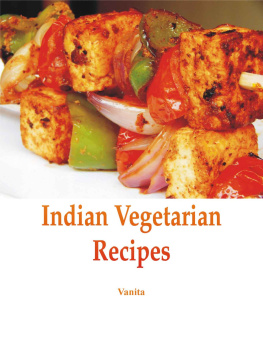A Taste of India:
The Complete Indian Cookbook: Master Indian Cooking with more than 1000 Recipes!
Rekha Sharma
Mini Table of Contents (Comprehensive Table with Recipe Names After This)
=Vegan = Quick Pressure Cooker Recipe
About the Author
Rekha Sharma was born in Jalandhar, a small city in the Indian state of Punjab. Her father was in the Indian army, because of which her family used to move around a lot. By a very young age, Rekha had experienced cuisines from all over India, and every time she travelled to a new area and tried new local cuisines, her passion and fascination for Indian food grew. She completed M. Phil. in English from a reputed Indian University, and then became a college professor for a few years. She got married at a young age of 23, and left her job as a college professor when she had her first child. By the age of 26, she was a mother of two- a son and a daughter, and was mostly house-bound. As she started cooking for four, her passion for cooking reignited, and she started giving cooking classes on the side. She worked as a part time cook until her kids became independent, and then she opened her own restaurant in Delhi, India. Today, she is 50+ years old, manages a restaurant, and writes Indian cookbooks on the side. She is best known for A Taste of India, a series of Indian cookbooks.
Introduction
India is a huge landmass which contains mountains, deserts, plateaus, plains, beaches, and islands. Politically, it is divided into 28 states, and most of these states have their own languages and cultures. Even within a political state you will find multiple small villages with their own sub-languages and cultures. Needless to say, India is a land of variety, and this variety shows in its cuisine. Indian restaurants are everywhere, and if youve been through the menu of one, you know what Im talking about.
North India is a land of flatbreads, while South India is a land of rice. India has a coastline that stretches for 7,516.6 km (4,671 miles), and you can find a wide variety of seafood here, depending on which part of the coastline youre at. Not just the ingredients, but the preparation methods also differ from region to region. If youre in the eastern state of West Bengal, you will see them prepare fish with mustard and turmeric. On the other hand, if youre in Kerala, you will watch them use coconut instead.
Majority of the people in India are Hindus, and the truly devout Hindus are usually vegetarian. Vegetarianism is especially prevalent in central India. The primary source of protein in these vegetarian dominated areas is- beans, grains, lentils, peas, etc. Indians usually refer to these as Dal. Indian food has less meat and more vegetables, which make Indian food great for health, and also for the environment. The cooking methods used in this book make the recipes as healthy as possible without compromising the authentic Indian taste. You will find that the majority of recipes in this book are Vegan, and you can identify a vegan recipe from the symbol. Also, in India, the pressure cooker is highly popular, and hence you will find quite a few pressure cooker recipes in this book. Recipes cooked in a pressure cooker are generally very quick to make, and in this book, you can identify those recipes from the symbol .
In this book, you will find delicious recipes from all over India. Most of the recipes in this book are simple, and if youre a newbie when it comes to cooking, this book will serve you well. You will, however, need to learn to source some of the ingredients that arent commonly used in American cooking. If you cant find an ingredient in a local store, you can always find it on amazon.com. If there is a local Indian or ethnic market close to your home, youre in luck! Also, a pressure cooker is an indispensable tool to have in your kitchen, so invest in one if you havent already.
Indian Meals
Typically, an Indian meal contains a wet or dry dish of meat or vegetables, or both. This dish is typically eaten with an Indian flatbread, or rice. If the food is spicy, which it usually is, there is plain yogurt on the side to soothe the flavour, and also to aid with digestion. If one wishes to add a little more punch to the meal, he/she can have a pickle or chutney on the side. Salads are also quite common side dishes.
If cooking for guests, we Indians usually go for slightly fancier versions of the staples. Plain yogurt may be replaced by raita (plain yogurt with added spices and other ingredients), plain rice may be replaced by fried or seasoned rice dishes, and fried flatbreads called paranthas may be used. We usually offer starters and desserts to guests too.
For everyday eating, however, I will advise you to stick to the healthier low-calorie stuff. Vegetables are a staple in the Indian diet, and for good reason. A balanced meal has a good balance of carbohydrates, fiber, protein, and fat. The diet should be rich in other vitamins and minerals too, which Indian food usually is, thanks to the presence of vegetables, legumes, and grains.
Another thing you need to consider is how much spice you like. It is possible to add more later, but impossible to extract the spice once added, so it is usually a good idea to add the spice incrementally, tasting the food as you add. You will only need to do this once or twice though. Once you know what you like, and how much you can handle, go all out!
Using this Book
In this book, I will call for cooking appliances that are readily available in almost every kitchen. I understand that it is not possible to have a tandoor (a large cylindrical clay or metal oven used in traditional Indian cooking and baking) in your kitchen. The tandoor can be replicated by what is readily available in your kitchen, and I will clearly detail in the directions of each recipe what you need to do.
In order to prepare the recipes in this book, you will need a stove, an oven, a pressure cooker, and a microwave in a few cases. A food processor will also come in handy as it will save you a lot of hassle.
It is usually a good idea to prepare things like spice pastes, chutneys, spice powders, and other perishable basic ingredients in bulk, and in advance. These ingredients are best stored in the freezer, so if you have one, make sure you use it. Here are a few basic tips and tricks to know before you dive into the recipes:
- Read the full list of ingredients and directions before you commit to a recipe. Make sure you have all the ingredients and all the appliances used in the directions. You can make almost every spice blend used in this book easily at home, but you can also buy these at a store. Ill leave the decision to you. You can find almost anything online these days.
- A lot of the recipes in this book will call for ingredients like cilantro, dry-roasted cumin, sesame seeds, black peppercorns, ginger paste, garlic paste, ginger-garlic paste, green chutney, crispy fried ginger, crispy fried onions; fresh lemon juice; paneer (Cottage cheese), mango and lemon pickles, and some chutneys. If you want to add Indian recipes to your arsenal, and wish to prepare these regularly, you will do well to make these ingredients a staple in your pantry.
- Start the cooking process when youre good and ready, and have everything you need ready, and in front of you.
- It is always a good idea to add a little less salt and seasoning if youre not sure how much you will need. Taste your food as you go to hit that perfect spot. If, however, you do add more than you can handle by mistake, you have a few options. Throw in a peeled and chopped potato, or try eating the dish with yogurt on the side. You can also make some more of the dish, this time without the spice, and then add it to the over-spiced batch.



